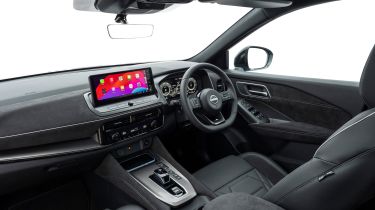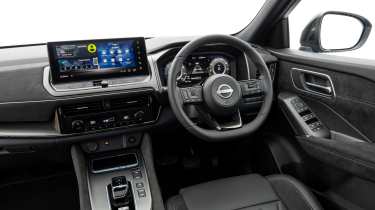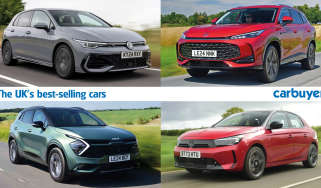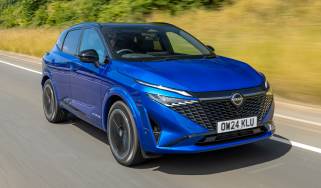Nissan Qashqai review - Interior & comfort
“The latest Qashqai’s interior is modern and hi-tech with solid rather than spectacular practicality”
The latest Nissan Qashqai has the best interior of any Qashqai yet, and it’s one of the most impressive in the Nissan range. Updates improved the quality as well as the technology offered. All versions have a modern-looking dash with good-quality materials, and models from N-Connecta and above feature a new Google-based infotainment system.
There are extra soft-touch materials on show and double-stitching, giving the Qashqai an uplift in perceived quality, which has mostly been successful. We say mostly because there are some signs of cost-cutting here and there if you look closely, such as the visible wiring behind the rear-view mirror and a cheap-feeling gear selector, but the Qashqai feels good up against rivals. You won’t feel like you’re in a Mercedes or a BMW but the freshness and slightly upmarket interior will impress.
|
Key features | ||||
|
Acenta Premium
|
N-Connecta (Acenta Premium, plus…)
|
Tekna (N-Connecta, plus…)
|
N-Design (N-Connecta, plus…)
|
Tekna+ (Tekna, plus…)
|
Is the Nissan Qashqai infotainment and sat-nav system easy to use?
All Nissan Qashqais get the same 12.3-inch touchscreen. It’s located on top of the dashboard nicely in the driver’s eye-line. That means your eyes are away from the road for less time. Information can also be displayed on the digital dial cluster and, on higher spec cars, a large head-up display in the windscreen. All these displays are clear with good resolution and crisp graphics.
Nissan chose to keep physical dials and buttons for the climate control panel; we’re pleased the designers took this approach, rather than burying the climate settings in the touchscreen as others do. You’ll find that physical controls are much easier to use while driving. In fact, proper buttons still have a place throughout the Qashqai’s cabin – haptic touch panels like those found in a Volkswagen Golf are few and far between. It’s not a bad place to spend time with the ambience improved by Nissan’s 2024 updates to the car that added upmarket Alcantara (N-Design) and leather (Tekna and Tekna+) finishes to the higher spec models.
The 12.3-inch touchscreen is fast to respond and all but the base Acenta Premium cars get the very impressive Google-based infotainment system. It’s as good as you’ll find in the mid-size SUV class with Google Maps navigation, Google Assistant voice control, apps and the ability to sign in with your Google account to share favourite locations. It’s worth upgrading to N-Connecta trim to get this functionality as Android users won’t need to pair their phones with the car. There is still Android Auto and Apple CarPlay on all models and it’s wireless on all bar the Acenta Premium cars, where it’s needed for navigation.
You can configure the Qashqai’s digital instrument cluster to your preferences and the head-up display is said to be the largest in any mid-size SUV at 10.8 inches. We were impressed by the navigation directions the head-up display shows but some drivers may view it as too big and distracting.
Is the Nissan Qashqai well equipped?
The Nissan Qashqai lineup currently includes five trim levels and starts from around £31,000. The old Visia entry-level trim was given the chop as part of the 2024 facelift. The base Acenta Premium gets 17-inch alloy wheels, two-zone air conditioning, keyless entry and start and a rear-view camera on top of the 12.3-inch touchscreen with wired Apple CarPlay and Android Auto.
N-Connecta has 10-inch wheels, plus customisable ambient lighting, an around-view monitor with 3D views of the car’s exterior, front parking sensors and the Google-based infotainment tech. Tekna features 19-inch wheels, a head-up display, the PilotAssist driver assistance package, heated seats and a powered tailgate. N-Design is the same price as Tekna but majors on style with 20-inch wheels, full body-coloured exterior trim and LED indicators. The top-spec Tekna+ has got the lot but it’s around £4,000 more than Tekna and N-Design. Massaging front seats, Nappa leather upholstery and a Bose audio system are all included but it’s not the best value in the range.
What options should you choose on the Nissan Qashqai?
The options available on the Qashqai are fairly limited. Buyers can upgrade to the Bose 10-speaker sound system for around £600 and get the fixed glass roof for £650.












